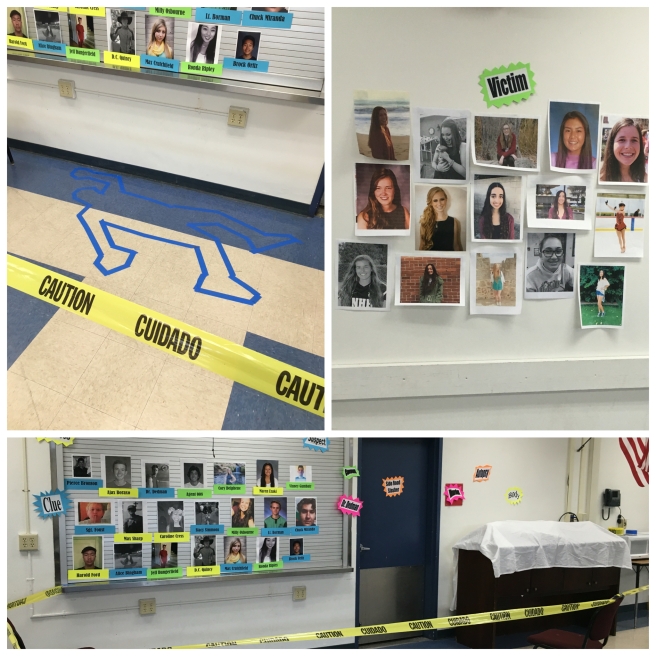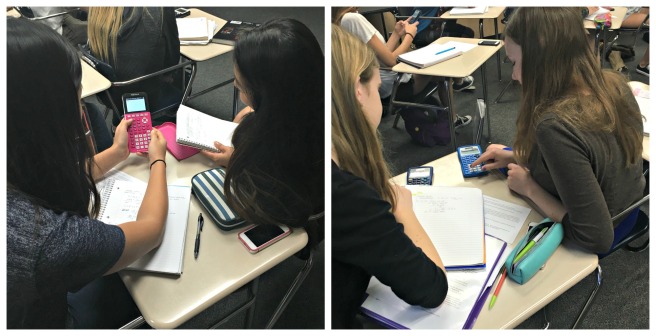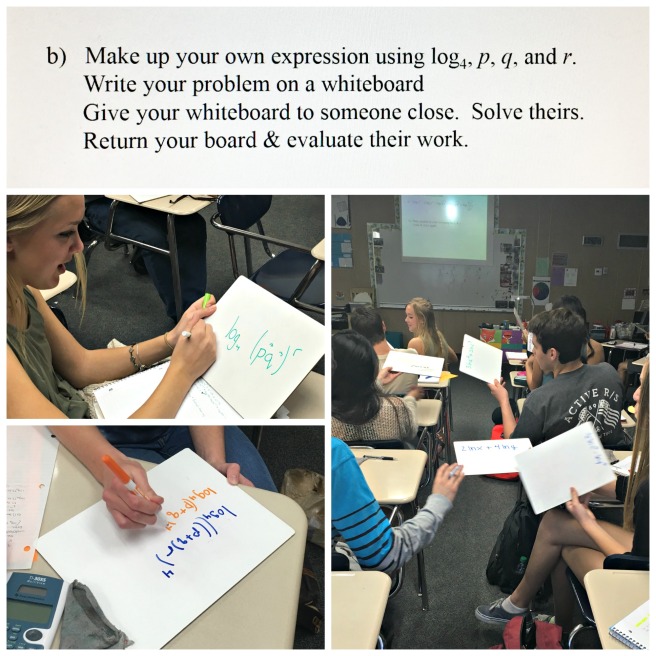(#MTBoS Blogging Initiative Assignments #4)
Second semester has just begun and we spent the first four days of Precalc doing a little SBAC preparation by taking the computer based ICA and the performance task, and then going over it as a class. (Another post on that later.) So yesterday was our first time being back to our “normal” schedule. We started our chapter on Exponents and Logs (which makes students terrified because they totally didn’t “get” this topic last year in Algebra 2/Trig) and first up was “Rational Exponents.”
Janelle’s Brain: That was a good idea I had to make them grab their whiteboard when they came in the room – I hate passing out those things and the students just do it so very slowly. Having that reminder right on the first slide of the PowerPoint a good idea.
First was to review the “rules.”
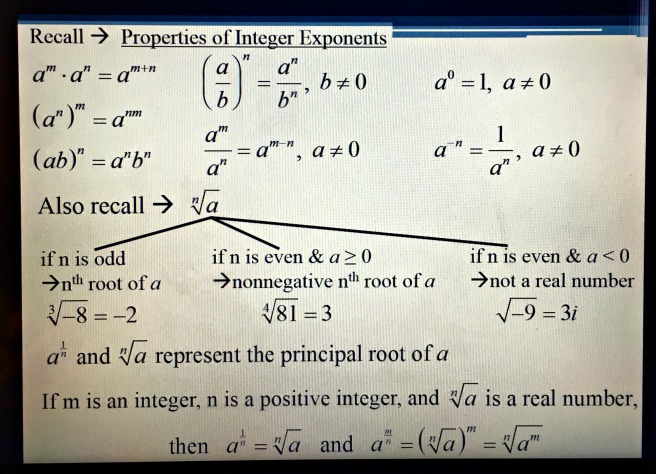
Janelle’s Brain: This slide is super overwhelming! Good thing I have it showing just a bit at time. And is there a better way to get this info out to the students? I mean, these rules go way back to Algebra 1 class, they do still mix them up sometimes and but really the lesson isn’t designed to LEARN these, just be reminded of them, so maybe it is okay. Plus I know the lesson gets better later. But maybe this is not the best way to start.
The first example we do together. The students have whiteboards because of another part of the lesson, I decide to have them do the first part of the question on their whiteboards – writing the expression in radical form.

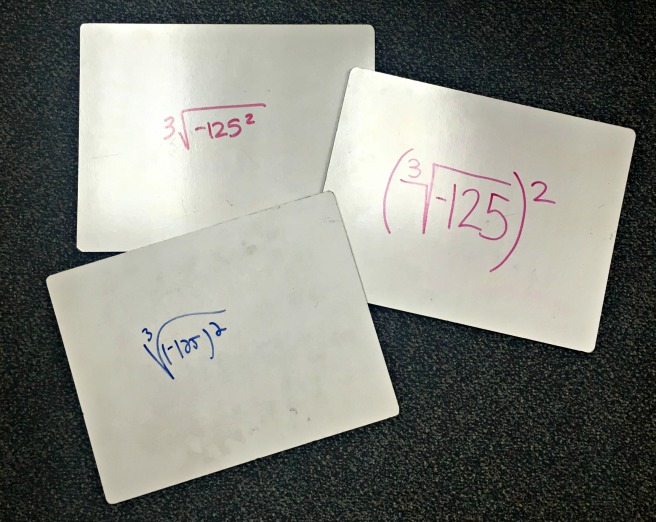
Janelle’s Brain: Good thing I did, because – yay!!! – spur of the moment teaching moment. I noticed that across the class the kids had three types of answers and only two of them were correct. I nab three boards from kids in the front and show them to the class. We talk about how they are the same and how they are different and how two of them are great and one of them could be better and how important parentheses are and remind them about order of operations. I reassure the one I grab the “not so good one” from that she was totally not the only one who had that answer and she is good with that. I think I have developed that “safe classroom culture” that experts always talk about so students are okay with making mistakes. Win – high five to self.
Now we get to the part of the lesson I am proud of and that we adapted a couple of years ago – “Two Truths and a Lie.” It is a good way to have lots of examples and the students can get exposure to common mistakes that they themselves might make. Plus we ask them to fix the mistakes and say what went wrong.

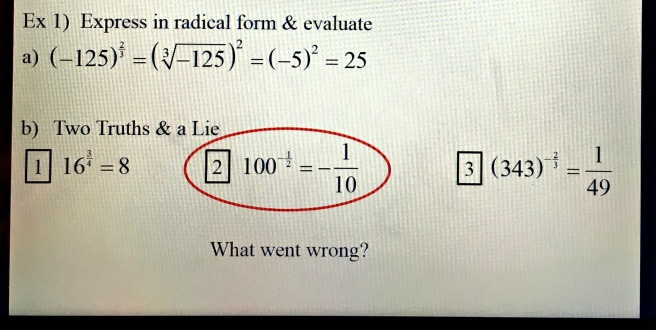
Janelle’s Brain: Hmmmm, these exponents, especially the fractions ones are super hard to read!! I hustle up to the front and read each problem off in my super slow teacher voice. I am reminded that I DESPERATELY NEED (okay, WANT) a new projector with higher lumins. And how do I even spell that word? And who do I need to talk to to make that happen. I thought that one day the Assistant Supe was in here we talked about that. Hmmmm…oh yeah, I am teaching right now…back to the students.
We plug along. We do one example together and then “Two Truths and a Lie” for another set.
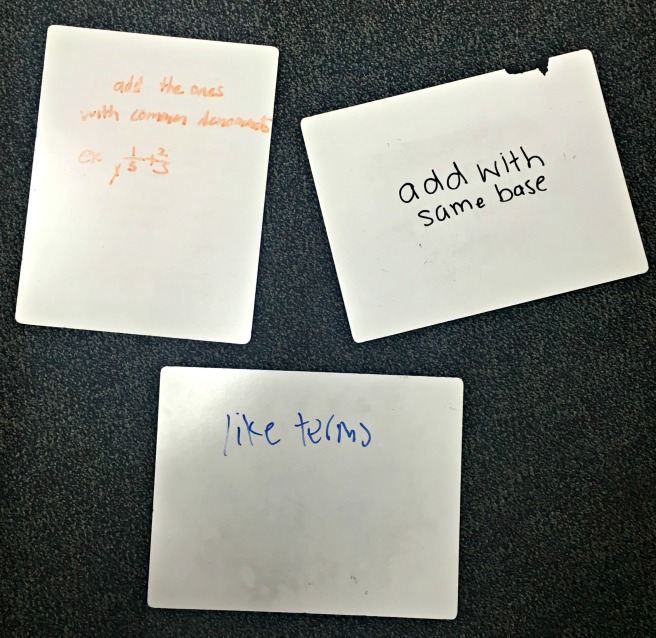
Janelle’s Brain: Ooh, let’s explain WHAT we are going to have to do, before we do it for this example. I tell them to quickly write on their board what they have to do to simply with those fractional exponents. As a “class” they come up with a good answer. I have three students read off what their board says and we have the idea.
Last set of examples.

Janelle’s Brain: Yikes, this last set is crazy…30 seconds in I instruct the students to work together with their peeps around them. That new girl in the back who just transferred to me is working super well with the girl in front of her – good for them, that was easy.
Last example, a word problem, the students favorite. They answer it on their whiteboards.
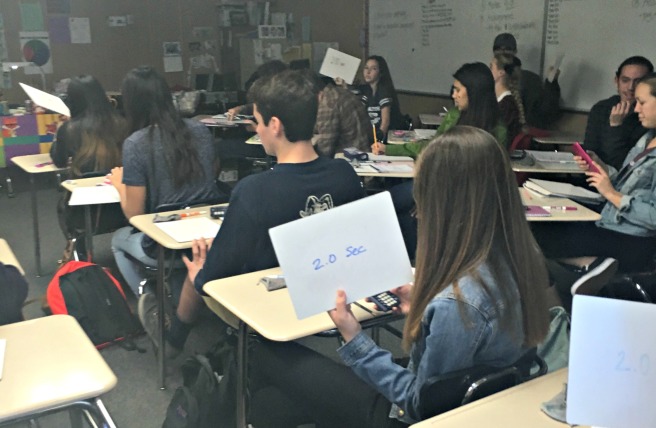
Janelle’s Brain: Yep, they all got the right number, but not all of them put the units. I am usually super lazy about labels, so I remember that I am not supposed to be lazy and I am supposed to “attend to precision” so I make them all look around at each other whiteboards and put them back down to fix something if they feel they are missing something. Good teaching moment, even if it was a short moment. And a good reminder to myself.
Lesson over. Boards go back into the bin.
Janelle’s Brain: Overall that was good…I liked the discussions we had about the mistakes we made ourselves as well as the mistakes from the “Lie.” Lunch is next, happy face. I wonder if lessons like this are okay. Was it too boring? Was it effective? We will see when it comes to Monday and I see how the homework went.
